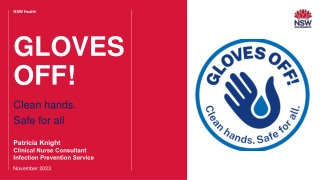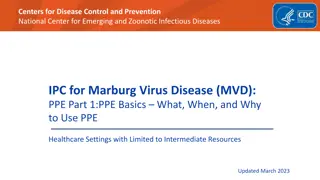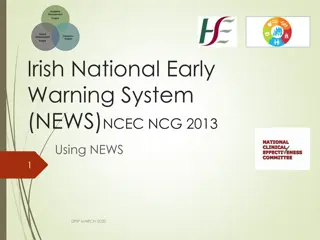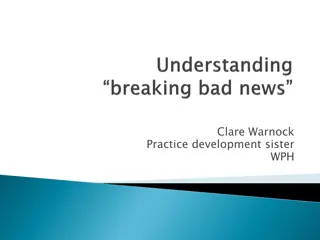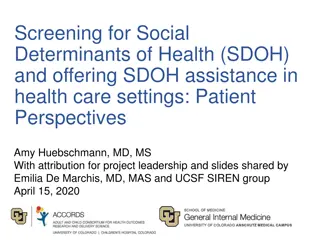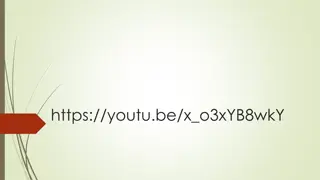Effective Strategies for Delivering Bad News in Healthcare Settings
Learn about the crucial role of primary care physicians in breaking bad news, understand the ABCDE technique for communication, and explore examples of best practices. Discover the significance of involving the patient's family, preparing appropriately, and handling emotional reactions with empathy.
Download Presentation

Please find below an Image/Link to download the presentation.
The content on the website is provided AS IS for your information and personal use only. It may not be sold, licensed, or shared on other websites without obtaining consent from the author.If you encounter any issues during the download, it is possible that the publisher has removed the file from their server.
You are allowed to download the files provided on this website for personal or commercial use, subject to the condition that they are used lawfully. All files are the property of their respective owners.
The content on the website is provided AS IS for your information and personal use only. It may not be sold, licensed, or shared on other websites without obtaining consent from the author.
E N D
Presentation Transcript
BREAKING BAD NEWS Mishari Al-Hamid Sami Al-Amri
OBJECTIVES Definition of bad news. Role of primary care physicians. How to breaking bad news ABCDE technique Examples of how to break news. Quizzes
Which of the following is a correct statement regarding family of the patient in breaking bad news? a. Do not allow them to join the conversation. b. Invite them but only after delivering the bad news c. It is recommended to involve them in the meeting of breaking bad news. d. All above is correct
W hich of the following habits is a good for preparation before delivering the bad news? a. Warn the patient that a bad news are coming b. Set a public place to tell the patient the bad news. So, they can t cry. c. Do not make anyone of the patient s family set with you during telling the news to keep the privacy of the patient. d. Let the nurse set with you. So, she/he can witness any harmful thing can caused by the angry patient
W hen you were telling a mother that her daughter has a fetal congenital heart disease, she started crying. W hat is the appropriate thing to do? a. Tell her that her daughter will be okay to give her a hope. b. Stay in silence and give the mother time. c. Be empathetic d. Say to the mother: you are an adult. You have to stop crying
W hich of the following consequences is a expected to happen when the physician delivering bad news in inappropriate way? a. Patients may harsh treatments beyond the point where treatment may be expected to be helpful b. Can cause psychological harm to the patient c. Considered as ethical issue. d. All above
any news that drastically and negatively alters the patient s view of her or his future .
IMPORTANCE OF BREAKING BAD NEWS
Bad news can affect Physician Patient Care quality Disease outcomes Stress Psychological Ethical Hopefulness Satisfaction
BAD NEWS CAN AFFECT Ability of the patient to coherence information. Satisfaction on the medical care. Level of hopefulness. Patients may harsh treatments beyond the point where treatment may be expected to be helpful invariably cause psychological harm is unsubstantiated
How physicians are adherent to follow technique or training to deliver bad news?
WHAT IS THE ROLE OF FAMILY PHYSICIAN IN BREAKING BAD NEWS?
family physicians encounter many situations that involve imparting bad news; for example, Pre-employment assessment has revealed HIV positive results for an adult Seeking more information after a diagnosis of a cancer by oncologist. Adolescent s polydipsia and weight loss prove to be the onset of diabetes
The life of a sick person can be shortened not only by the acts, but also by the words or the manner of a physician. American Medical Association s first code of medical ethics 1847
Approaches to break bad news Rabow and Mc phee s (ABCDE) approach Baile and Buckman (SPIKES approach) Other types
Fear of being blamed. Fear of the unknown and untaught Fear of unleashing a reaction Fear of expressing emotion Fear of not knowing all the answers Personal fear of illness and death
HOW BAD IS IT? Department of Surgery at Baylor University Medical Center at Dallas 93% of respondents perceived delivering bad news to be a very important skill and 7% a somewhat important skill only 43% of respondents felt they had the training to effectively deliver such news. 85% felt they needed additional training to be effective when delivering bad news. 59% were residents and 26% were attending's. 73% first delivered bad news while intern.
HOW TO BREAK THE BAD NEWS
ADVANCE PREPARATION BUILD A THERAPEUTIC RELATIONSHIP COMMUNICATE WELL DEAL WITH PATIENT AND FAMILY REACTIONS ENCOURAGE AND VALIDATE EMOTIONS
ADVANCE PREPARATION Arrange for adequate time, privacy and no interruptions (turn pager off or to silent mode). Review relevant clinical information. Mentally rehearse, identify words or phrases to use and avoid. Prepare yourself emotionally.
BUILD A THERAPEUTIC RELATIONSHIP Determine what and how much the patient wants to know. Have family or support persons present. Introduce yourself to everyone. Warn the patient that bad news is coming. Use touch when appropriate. Schedule follow-up appointments.
COMMUNICATE WELL Ask what the patient or family already knows. Be frank but compassionate; avoid euphemisms and medical jargon. Allow for silence and tears; proceed at the patient's pace. Have the patient describe his or her understanding of the news; repeat this information at subsequent visits. Allow time to answer questions; write things down and provide written information. Conclude each visit with a summary and follow-up plan.
DEAL WITH PATIENT AND FAMILY REACTIONS Assess and respond to the patient and the family's emotional reaction; repeat at each visit. Be empathetic. Do not argue with or criticize colleagues.
ENCOURAGE AND VALIDATE EMOTIONS Explore what the news means to the patient. Offer realistic hope according to the patient's goals. Use interdisciplinary resources. Take care of your own needs; be attuned to the needs of involved house staff and office or hospital personnel.
ROLE PLAY 1 A 57-year-old male schoolteacher recently received a screening colonoscopy. During the procedure, a mass was biopsied. The mass was diagnosed as a poorly differentiated adenocarcinoma. The patient is waiting at the clinic to see her primary care physician to discuss the results.
ROLE PLAY 2 A 27-year old male came to primary care clinic for pre-mariatal medical assessments. His results showed positive HIV. How to approach him.
WHAT WAS WRONG ABOUT THE PHYSICIAN?
THANKS! Any questions ?



